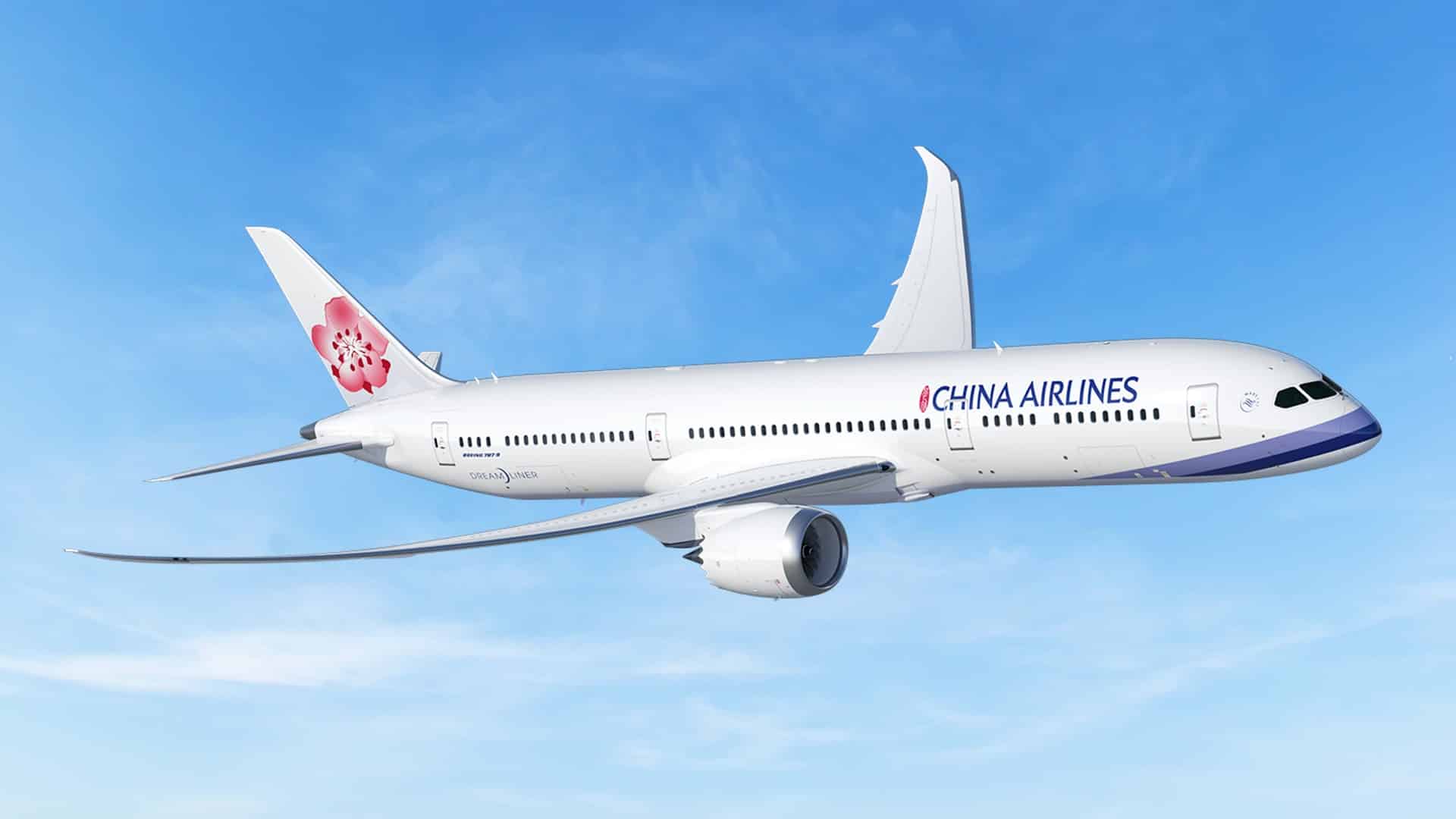Aerospace
China Airlines Order for Up to 24 Boeing 787 Dreamliners
Boeing and China Airlines announced they have finalized an order for up to 24 787 Dreamliners. #Boeing #B787

- Selecting the 787 to expand China Airlines’ global network and cargo capacity
- Fleet modernization with 787 cuts fuel use and CO2 emissions by up to 25%
SEATTLE, Sept. 28, 2022 /PRNewswire/ — Up to 24 787 Dreamliners have been ordered by China Airlines and Boeing (NYSE:BA), as the airline invests in the fuel-efficient widebody to increase passenger and cargo operations.
The agreement comprises a firm order for 16 of the 787-9‘s with the greatest range, along with options for an additional eight aircraft. This significant acquisition will help the airline achieve its long-term sustainability objectives.
“We are excited to introduce the 787-9 Dreamliner into our operations as we continue to upgrade our fleet with more modern, fuel-efficient airplanes. Adding the state-of-the-art 787 will help us reduce carbon emissions, while also providing our customers with unmatched levels of comfort,” said China Airlines Chairman Hsieh Su-Chien. “Our continuous investment in fleet modernization is the cornerstone of our sustainability efforts.
The 787’s best-in-class efficiency and low operating costs will allow us to expand our network for years to come.”
10 things about Boeing 737 max aircraft.(Opens in a new browser tab)
The best-selling model of the Dreamliner family, the 787-9 will allow China Airlines to operate with the lowest trip cost among medium-sized widebodies while reducing fuel use and emissions by up to 25% compared to the airplanes it replaces. Since entering service in 2011, the 787 family’s fuel efficiency, flexibility, and range have enabled airlines to open more than 325 new nonstop routes and reduce carbon emissions by 80 billion pounds.
Boeing received the most orders at the Farnborough airshows in 2022.(Opens in a new browser tab)
“The 787’s superior fuel efficiency and range, combined with China Airlines’ existing fleet of 777-300ERs, will enable the carrier to grow efficiently and also expand its global route network,” said Ihssane Mounir, Boeing senior vice president of Commercial Sales and Marketing. “This is a milestone order in our continuing partnership with China Airlines, and the market-leading efficiencies of the 787 will play an important role in furthering the airline’s sustainability efforts.”
How Airbus gained trust in the Chinese aircraft market ?(Opens in a new browser tab)
Powered by advanced engines and a suite of environmentally progressive technologies, the 787 family has an airport-noise footprint that is 60% smaller than the previous generation of airplanes. In addition, the 787’s revolutionary composite structures resist corrosion and are perfect for operating in warm and humid climates served by Taipei-based China Airlines.
China Airlines now has 22 Boeing jets on order, including six 777 Freighters. The airline also currently operates 10 777-300ERs (Extended Range), which will form a highly efficient widebody fleet and complement its new fleet of 787s.

Aerospace
Boeing Transfers Rocket Stage to NASA, Paving Way for Human Moon Mission

Boeing has achieved a significant milestone by providing NASA with the second core stage of the Space Launch System (SLS) rocket.
This crucial component, crafted at NASA’s Michoud Assembly Facility (MAF), is set to propel the Artemis II crew into lunar orbit, marking humanity’s return to deep space after a 50-year hiatus.
The monumental Boeing-built rocket stage, the largest element of the Artemis II mission, will embark on a journey aboard the Pegasus barge, traveling 900 miles to NASA’s Kennedy Space Center.
Comparison of two legendary aircraft B777x vs B747 aircraft:Click here
Upon arrival, it will be meticulously integrated with other essential Artemis II components, including the upper stage, solid rocket boosters, and NASA’s Orion spacecraft within the iconic Vehicle Assembly Building. This intricate integration process is a vital step toward the eagerly anticipated Artemis II launch, slated for 2025.
“Boeing-built products helped land humankind on the moon in 1969, and we’re proud to continue that legacy through the Artemis generation,” remarked Dave Dutcher, vice president and program manager for Boeing’s SLS program. “Together, with NASA and our industry partners and suppliers, we are building the world’s most capable rocket and paving the way to deep space through America’s rocket factory in New Orleans.”
NASA, Lockheed Martin Reveal X-59 Quiet Supersonic Aircraft:Click here
The delivery of Core Stage 2 marks a significant achievement in the evolution of the SLS rocket. Towering over 200 feet and powered by four RS-25 engines, this core stage, coupled with two solid-fueled booster rockets, will generate a staggering 8.8 million pounds of thrust. This immense power is crucial to launching Artemis II and future missions into the vast expanse of space.
The SLS rocket stands unparalleled in its capability to transport both crew and substantial cargo to the moon and beyond in a single launch. Its extraordinary capacity will facilitate the delivery of human-rated spacecraft, habitats, and scientific missions to destinations including the moon and Mars, ushering in a new era of space exploration.
-

 Travel1 week ago
Travel1 week agoAir India to Expand US Operations with Three New Routes After a Decade
-

 Travel2 weeks ago
Travel2 weeks agoWhy We Should Avoid These Stamps in a Passport
-

 Airlines1 month ago
Airlines1 month agoInvestigations Reveal Fake Chinese Titanium in Boeing and Airbus Jets
-

 Tech4 weeks ago
Tech4 weeks agoChina’s CATL Plans 1,800-Mile Electric Plane Launch by 2027
-

 Airport3 days ago
Airport3 days agoTop 10 Largest Airports in the World by Size
-

 Aerospace4 weeks ago
Aerospace4 weeks agoChina’s Fighter Jets Turn Wings into Autonomous Drones
-

 Airlines4 days ago
Airlines4 days agoAir India Rolls Out A350s for Delhi-New York JFK and Newark Routes
-

 Defence3 weeks ago
Defence3 weeks agoBoeing Enhances Chinook with New Engines and Block II Upgrades at $96 Million







